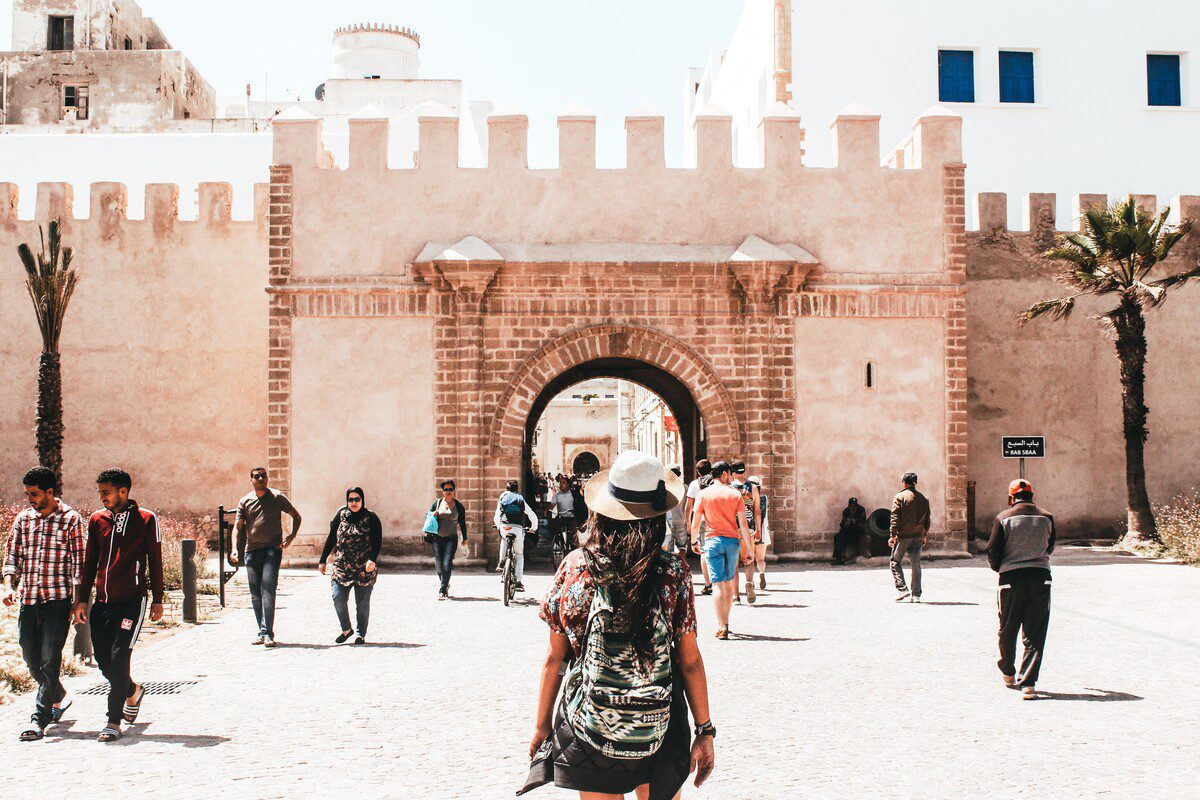Moroccan Terms You Need to Know
If you’re planning to visit Morocco, you’re likely also seeking to understand the country on a deeper level. The culture, social mindset, and all the characteristics that define a people are intrinsically woven into their language, expressions, and unique concepts.
Learning these key terms will not only help you navigate more easily during your travels but also unlock fascinating cultural insights and provide greater immersion. Understanding these words is like receiving a key to Morocco’s millennia-old civilization—they become bridges connecting you to local life. When yo comprehend the vendors’ calls in Marrakech’s souks, decipher the inscriptions on doorways in Fez, or grasp the wisdom of nomadic traditions under the Saharan stars, your journey transforms into a truly profound cultural experience. Here are the essential Moroccan terms we’ve selected for you:
What is a Medina?
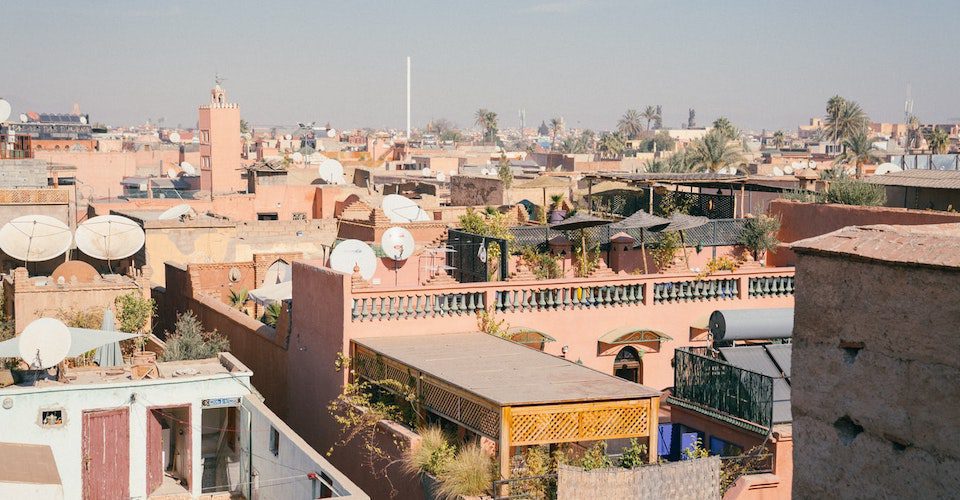
The “Medina” is likely one of the most common terms you’ll encounter when exploring Morocco. From Casablanca to Chefchaouen, Essaouira to Fez, wherever your journey takes you across this enchanting land, you’ll consistently discover this magical concept—it is truly the key to unlocking Morocco’s millennia-old civilization.
A Medina refers to the historic old town of a city, distinct from the more modern European-style districts. Its surrounding walls were originally built for protection against invaders, while within its labyrinthine alleys, traditional souks (markets) often occupy a significant portion of the space.
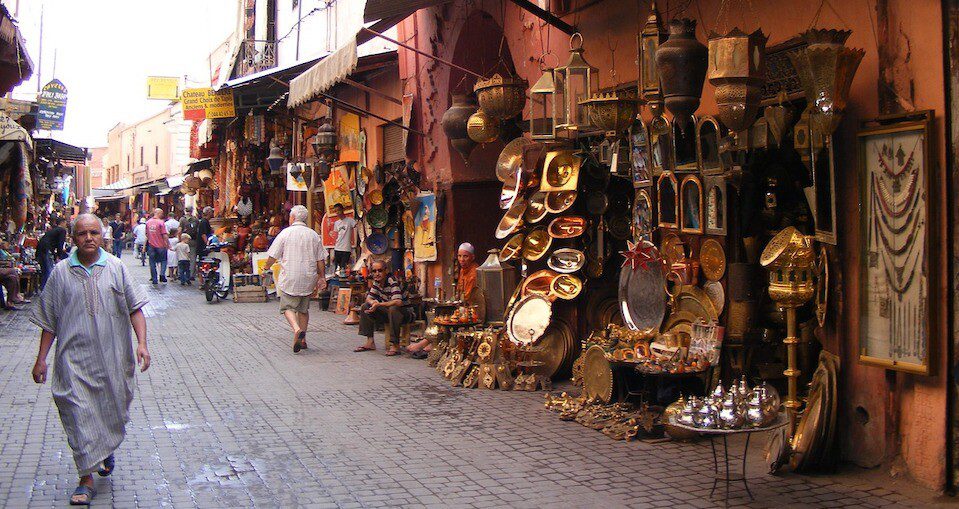
In the historic city of Fez, you’ll encounter the world’s largest and best-preserved Medina. This exemplary model of an Oriental city, placed under UNESCO protection, has remained virtually unchanged since the 12th century, with its distinctive deep blue ceramics serving as one of its most recognizable cultural symbols.
Meanwhile, Marrakech’s Medina astonishes visitors with its status as North Africa’s most populous old city and its refined urban layout. Built on pristine land in the 11th century, it maintains an intoxicatingly authentic urban fabric. Each Medina is a chronicle written in stone, waiting to be read with your every step.
What is a Riad?
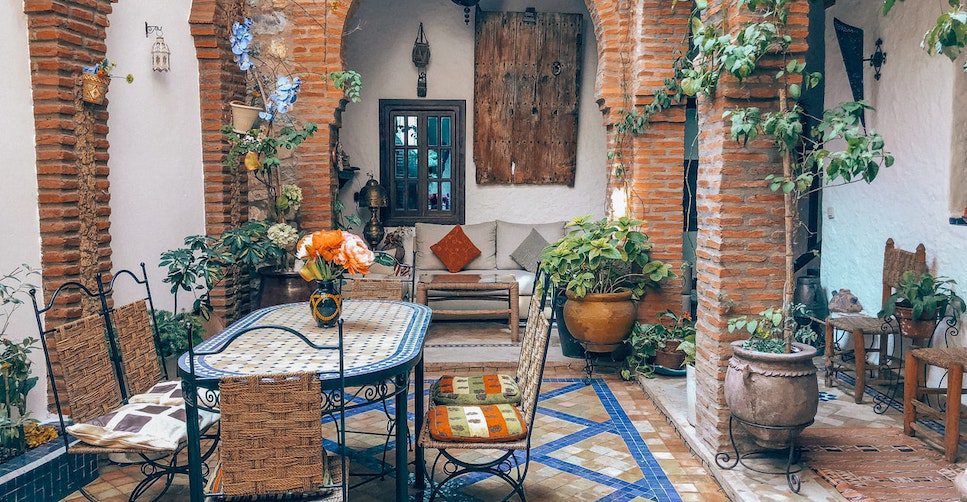
The term “Riad” is often misused to describe any Moroccan villa or traditional house. However, this word carries a very specific architectural meaning.
A Riad is a highly traditional Moroccan urban dwelling: a townhouse completely inward-focused, closed off from the exterior by high walls with minimal openings, designed to protect against both heat and street noise. Riads are typically located within the Medina, meaning in the heart of the old city.
They are organized around a central courtyard that functions as the core living space. The entire architecture revolves around this well-defined open area, with rooms arranged around it. Windows open inward toward the courtyard, and bedrooms are often accompanied by passageways and balconies overlooking this central space.
The courtyard remains naturally cool and is usually adorned with lush vegetation and a fountain or pool, creating a refreshing oasis. Stepping through a Riad’s entrance is like entering a parallel universe—a private sanctuary where Moroccan architectural wisdom seamlessly blends intimacy with nature in a harmonious microcosm.
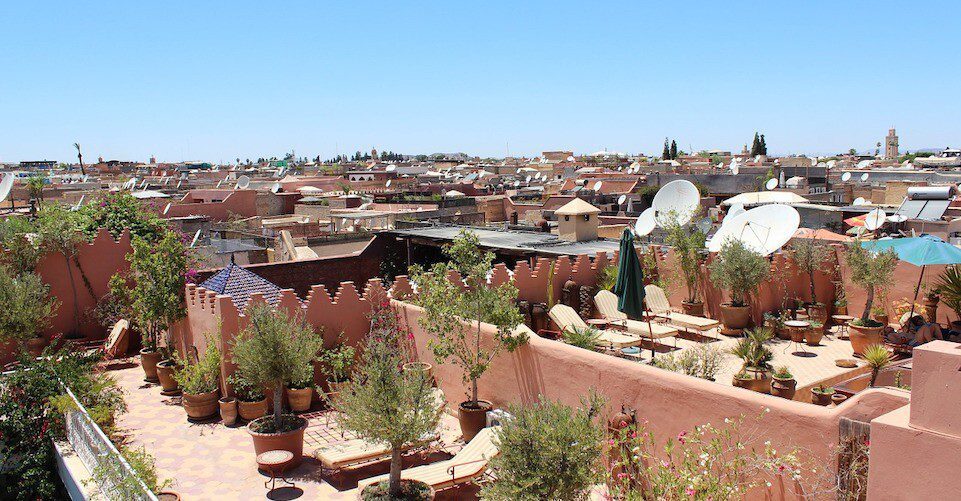
The living rooms and dining area open directly onto the courtyard, allowing its natural coolness to permeate the living spaces. The kitchen is located on the ground floor, while bedrooms are situated upstairs. The rooftop transforms into a terrace and sunroom, often offering panoramic views of the entire city.
Thus, at the turns of narrow streets in the old city, behind unassuming doors with no distinctive signs, amazed visitors discover genuine jewels of architecture and craftsmanship. These protected and comfortable spaces serve as sanctuaries of peace and tranquility—when you push open those seemingly ordinary wooden doors, you step into a poetic world parallel to reality, where every detail whispers tales of traditional artistry and modern comfort in perfect harmony.
What is a Tajine?
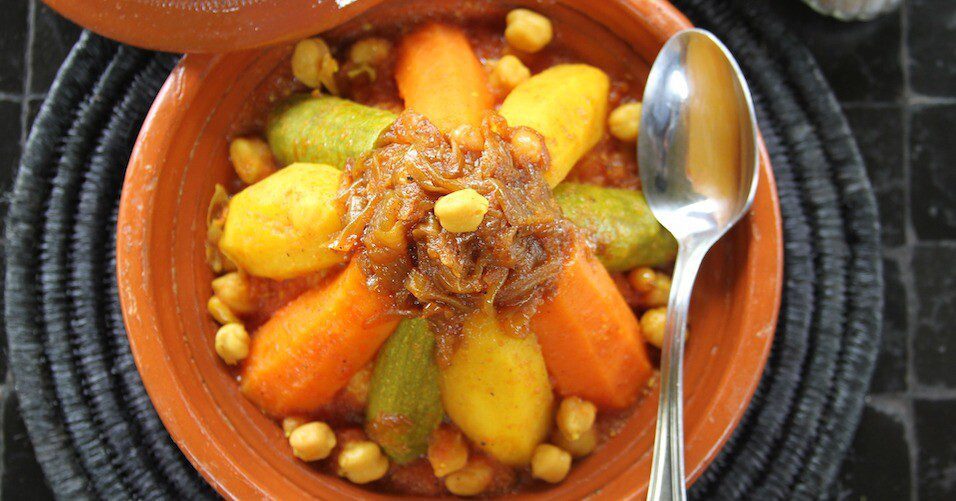
The term “tajine” (or “tagine”) carries a dual meaning: it refers both to the distinctive cone-shaped cooking vessel native to North Africa and the slow-cooked stew prepared within it.
A traditional tajine pot is typically crafted from clay, sometimes enhanced with colorful glazes and intricate patterns. Its ingenious two-part design consists of a shallow circular base and a conical lid. During cooking, steam rises into the dome-shaped cover, condenses, and trickles back down into the ingredients, creating a natural self-basting system that preserves moisture and intensifies flavors. The clay “knob” at the top of the lid remains cool to the touch throughout the cooking process, allowing safe handling without burns. When the lid is finally lifted, the revealed dish embodies not just a meal, but centuries of Moroccan culinary wisdom—a testament to harmonious coexistence with nature through ingenious design.
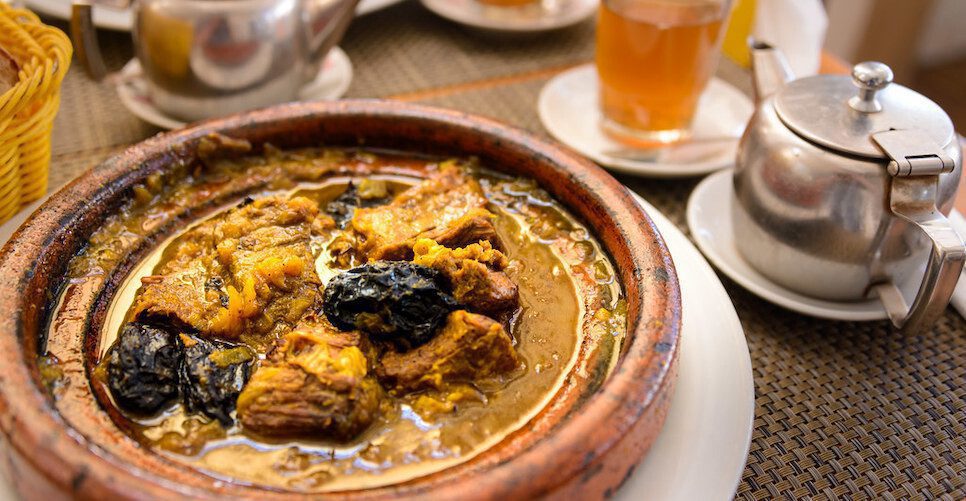
When the tajine completes its slow cooking process, the moment the conical lid is lifted reveals a culinary masterpiece steeped in tradition. The dish is typically served directly from the authentic clay base, allowing diners to share this aromatic delight family-style.
A classic tagine stew typically features lamb or chicken slow-cooked with vegetables, dried fruits, herbs, and nuts, infused with a complex blend of spices and simmering broth. The extended cooking time renders the meat exceptionally tender while allowing the flavors to meld perfectly within the unique steam-circulation system of the cone-shaped lid. As diners use fresh bread to scoop up the rich sauce, they experience the essence of North Africa’s “slow food philosophy.”
Today, this dish carrying Morocco’s culinary soul has crossed the Mediterranean. From New York to Paris, London to Tokyo, the colorful glazed tajine pots displayed in high-end kitchenware stores, along with the aroma of aniseed wafting from North African restaurants, together testify to how this ancient cooking vessel is becoming a new favorite in the kitchens of global food enthusiasts.
Ksars and Kasbahs
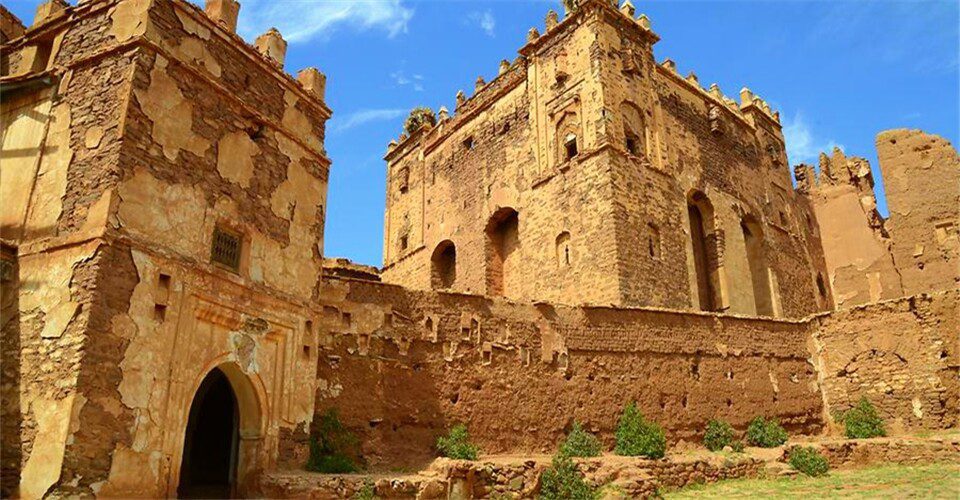
The term “Kasbah” or “Casbah” carries remarkably diverse meanings. Across different countries and even regions, it may refer to distinct structures—ranging from isolated forts in the countryside to urban districts housing state administrations and military forces.
In southeastern Morocco, however, a Kasbah typically denotes a square-plan building with four corner towers, constructed from rammed earth and traditionally used to house prominent families. This architectural form originates from Berber culture, where it is known as “Tighremt” in the native language. The term “Kasbah” itself was actually introduced to the region in the 1920s by Arab and French colonizers.
The oldest Kasbahs date back to the 17th or 18th century, though most existing structures are less than a hundred years old. Before their emergence, pre-Saharan valley populations primarily lived in “ksour” (singular: ksar). A ksar is a walled village protected by watchtowers, containing dozens or even hundreds of dwellings along with a mosque, streets, communal facilities, and spaces for celebrations. These settlements feature one or more monumental entrances, sometimes exquisitely decorated, functioning as self-sufficient desert micro-cities that embody centuries of adaptive architecture and communal living.
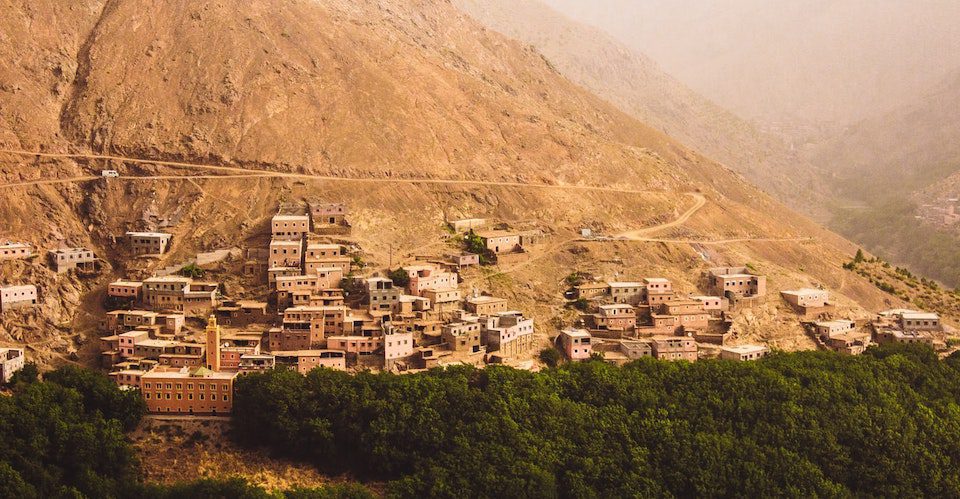
The ksour are, in principle, much older than kasbahs, with some dating back millennia, though there are also some constructed in the 19th century by previously nomadic tribes. Occasionally, one finds one or more kasbahs within a ksar. Ksour are far more numerous in the eastern valleys, while kasbahs dominate the western zone.
Beyond kasbahs and ksour, other traditional earthen brick structures exist in this region: marabouts or mausoleums covering a saint’s tomb, communal granaries that resemble kasbahs from the outside, and isolated watchtowers commanding strategic viewpoints.
In the tourism sector, there’s a common but inaccurate practice of grouping all these different constructions under the generic term “kasbahs.” Some hotels and restaurants further add “kasbah” to their names to attract customers, while in most cases the building is actually a newly constructed reinforced concrete block. Because of this commercial appropriation, the word “kasbah” is losing its original meaning and may soon simply become synonymous with “hotel,” eroding the cultural specificity of these historic architectural forms.
Hammam
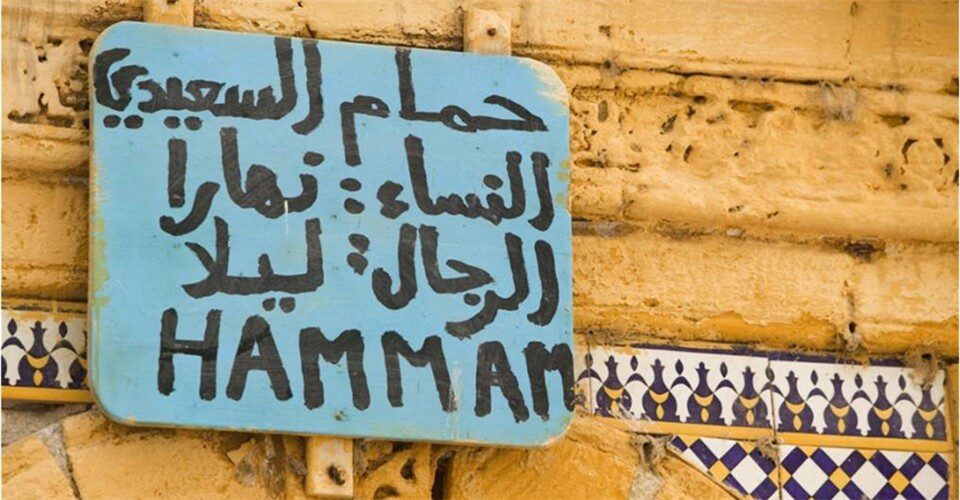
Hammam is far more than a public bath; it is a cornerstone of Moroccan society and culture—a sanctified space that blends physical cleansing, spiritual renewal, and social interaction. Its origins trace back to Roman baths, later adopted and infused with Islamic traditions of ritual purity.
A traditional Hammam typically consists of a series of rooms with progressively increasing temperatures: a cool room for undressing and resting, a warm room, and a hot room. The hot room often features a heated marble slab at its center. The architecture is an art form in itself, with domed ceilings that allow condensation to drip like starlight, walls adorned with intricate Zellij mosaics or carvings, and soft natural light filtering through star-shaped openings, creating a serene and mystical ambiance.
It is a microcosm of the community, serving as a vital social hub, especially for women. It’s a place for gossip, celebration, and even matchmaking. For visitors, experiencing a Hammam offers a profound insight into the local way of life, moving beyond typical tourism.
Djellaba
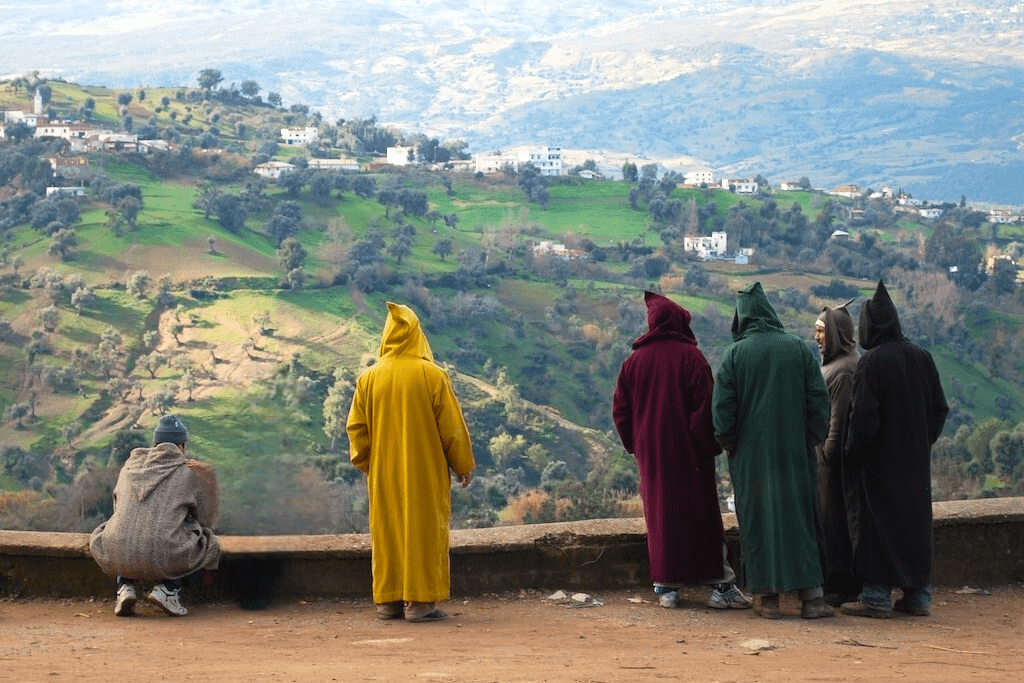
The Djellaba is the most iconic traditional garment of Morocco—a loose, hooded, long-sleeved robe worn by men, women, and children. It is both a practical response to Morocco’s diverse climate and a flowing statement of cultural identity.
Its most distinctive feature is the pointed hood, which protects from wind and sand and provides warmth. The loose fit ensures freedom of movement and promotes air circulation.
Depending on the season, winter Djellabas are made from thick wool or cashmere for warmth, while summer versions use light cotton, linen, or silk for coolness. Everyday Djellabas can be simple and plain, whereas those for festivals or special occasions may be elaborately embroidered with intricate patterns, sequins, or trim, reflecting the wearer’s regional origin and social status.
The Djellaba embodies values of modesty and decorum. It remains the daily wear for many Moroccans, particularly the older generation. Meanwhile, modern designers continually reinterpret the Djellaba, integrating contemporary elements and bringing it to the international fashion stage. For travelers, purchasing a Djellaba is not just acquiring a unique souvenir, but a perfect way to immerse oneself in the local cultural landscape.
Adobe
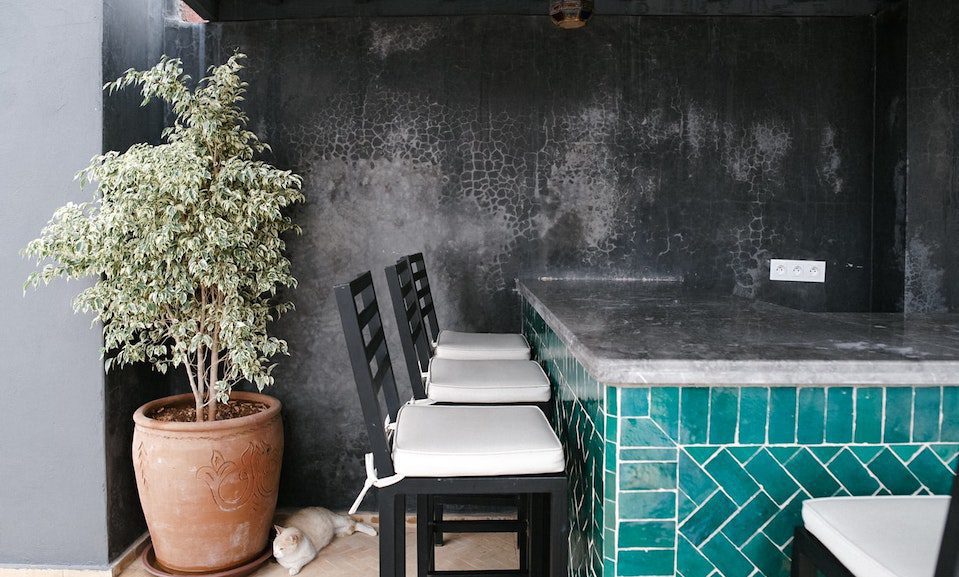
Adobe (a precursor to mud bricks) stands as one of the world’s oldest and most widespread building techniques, with a recorded history spanning over 10,000 years across diverse regions and climates. Hassan Fathy (1899-1989), the renowned Egyptian architect, was a pioneering figure in revitalizing this technology, whose eco-architectural principles remain relevant in Egypt today.
Throughout history, remarkable examples of adobe construction have emerged worldwide. In North Africa, the kasbahs of Morocco—fortified earthen castles built with adobe bricks—are particularly celebrated for their breathtaking beauty. These ochre-colored fortresses, rising from the desert fringes, blend seamlessly with the environment while showcasing human ingenuity through monumental towers and intricate geometric carvings. Astonishingly, despite centuries of exposure to desert winds, many kasbahs remain well-preserved today. They serve not only as testaments to Moroccan architectural wisdom but also as enduring sources of inspiration for modern sustainable building practices.
Moroccan cultural lexicon forms a living tapestry of traditions: from the steam-filled Hammam baths and flowing Djellaba robes, to the trance-inducing Gnawa rhythms echoing through alleys; from the millennia-old wisdom of the Tagine pot, the collective memory of Medina old quarters, to the earthen Kasbah fortresses standing sentinel in the desert—each term unlocks a dimension of Morocco’s heritage, weaving timeless traditions into modern life with unparalleled warmth and narrative depth.
Contact us for more travel information!

